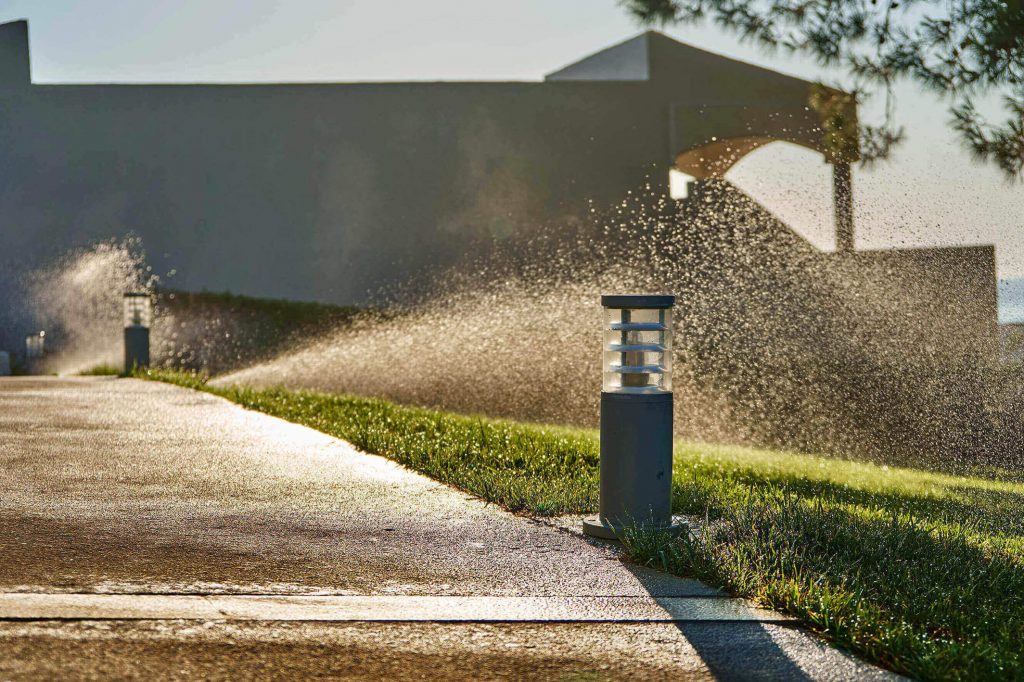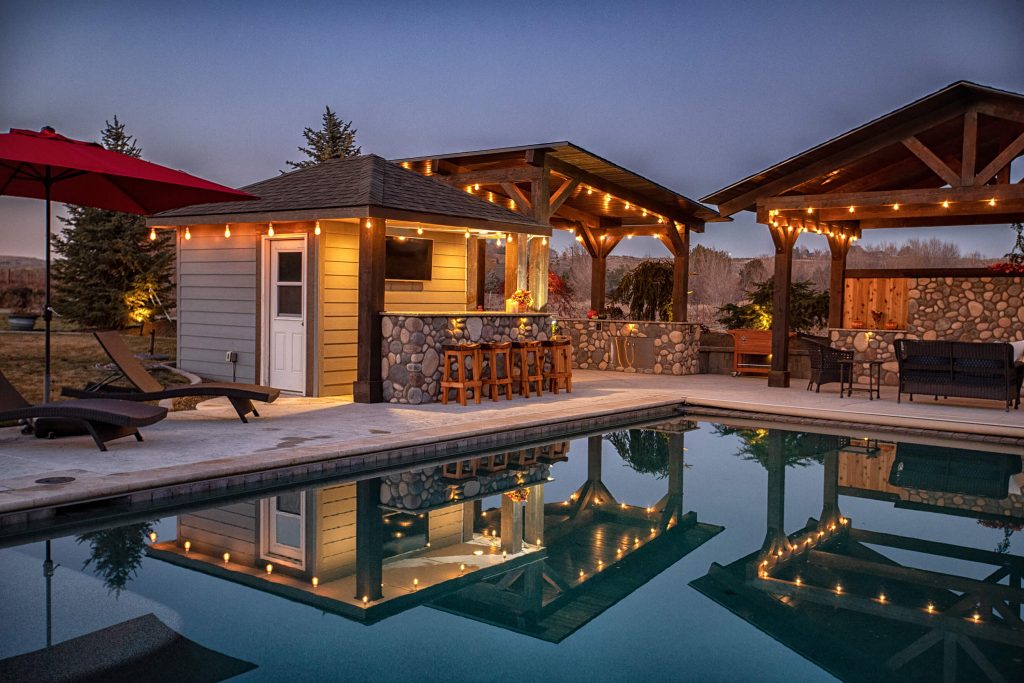
A healthy lawn makes a very good filter for absorbing many things that can be washed into our streams. The ideal lawn is one that will grow best in your environment without lots of supplemental watering. We have all probably read about people living in desert areas in the country trying to grow lawns that require almost daily watering just to survive the summer heat. This is extremely foolish and short-sighted. Turf grasses were never intended to be grown everywhere.
That being said, there are parts of the country where various turf grasses are well suited without the need for daily watering. In many places, grass can be grown without any supplemental watering, or only very minor supplemental watering. The following information is specifically intended for those areas.
How much water does a lawn need?
In general, turf grasses need about 3/4″ – 1″ of water per week to maintain green color and active growth. However, during certain times during the summer when high temperatures are the norm, you should allow lawns to naturally slow down in growth during those extreme conditions. You may let the lawn go almost completely dormant in hot weather. Many factors such as the soil and weather all have a role in the lawn’s water needs. Here are a few guidelines to follow:
-
Decide before hand.
Decide before summer heat and drought conditions arrive, to either water lawns consistently as needed throughout the season, or let lawns go dormant as conditions turn hot and dry. Do not rotate back and forth. In other words, don’t let the grass turn totally brown, then apply enough water to green it up, then let the grass go dormant again. Breaking the lawns dormancy actually drains large amounts of food reserves from the plant. -
When is it time to water?
The first few warm days of summer does not automatically mean to water lawns. In fact, allowing lawns to start to go under mild drought stress actually increases rooting.
Watch for foot printing, or footprints remaining on the lawn after walking across it (instead of leaf blades bouncing back up). Grasses also tend to turn darker in color as they go under drought stress. Sampling the root zone soil could be another option. -
Water as infrequently as possible.
Thoroughly water when you do water so moisture soaks down to the roots. Exceptions to this general rule would be for newly seeded lawns where the surface needs to stay moist, newly sodded lawns that have not yet rooted into the soil, or when summer patch disease is a problem (see Lawn Diseases). Otherwise, avoid frequent waterings that promote shallower root systems and weeds (e.g., crabgrass). -
Water early in the day if possible.
Given a choice, water early in the day when lawns are normally wet from dew. Avoid midday watering due to excessive evaporation, and at night due to potential increased chances of some diseases gaining a foothold. The exception to this guide is when you are in extremely hot weather and nighttime temperatures don’t go below 68 degrees. Then it is better to water in the late afternoon or early evening, providing you don’t have watering-time restrictions. Early or late in the day reduces the amount of evaporation that takes place during the very hot day, allowing more water to reach the root zone. -
Spread the water uniformly across the lawn.
Sprinklers vary in distribution patterns, and require spray overlap for uniform coverage. Placing coffee cans or similar straight-sided containers on the lawn can help measure water application rates. Avoid flooding areas, or missing other spots. On heavy clay soils and slopes, watch for excessive runoff; it may be necessary to apply the water in several applications to allow for adequate penetration. -
Water conservation.
To help conserve water, mow your lawn at a higher than normal height, avoid applying an excess of nitrogen as warm weather approaches, limit traffic over the lawn, improve turf rooting, control thatch and soil compaction, and avoid pesticide use on drought stressed lawns. Don’t allow water to hit the driveway or into the street. This is just wasteful. -
Avoid overwatering
Use a raingauge to measure how much water you’re applying. Overwatering does more than deplete the water supply, it also makes plants prone to pests and adds to stormwater runoff, which pollutes our water systems. By choosing and operating a watering system correctly, you can reduce water bills, insect and disease problems, and maintenance requirements. For example, the more you water your lawn, the faster it grows and the more it needs to be mowed. -
Hold off watering after fertilization and hold off fertilizing if heavy rains are expected.
To reduce the possibility of having fertilizer wash into our water system, don’t water heavily soon after fertilizing. Use light waterings to give the fertilizer the opportunity to be absorbed by the soil. Also, if heavy rains are in the forecast, hold off fertilizing until the heavy rains have passed. -
Monitor rainfall
Don’t water the lawn if rains are expected soon. Keep track of rainfall for the week. Don’t apply more water to the lawn than what is absolutely necessary. The guide of about 1″ of water per week is only a guide. If your lawn doesn’t get that 1″ of water, it’s not going to die.

